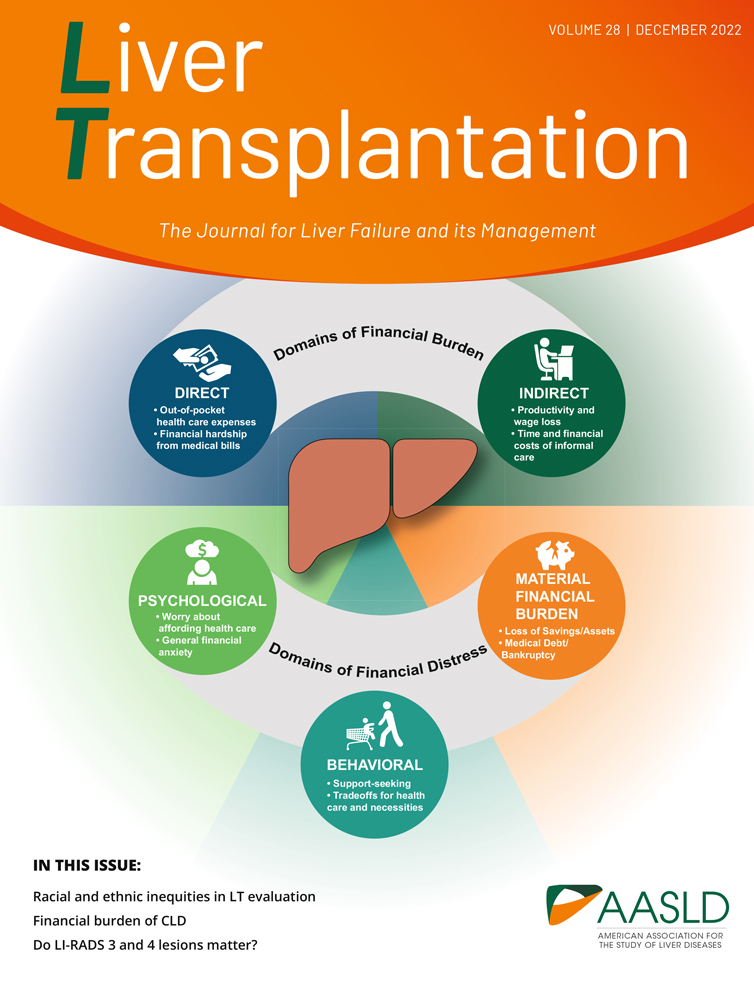Predictive models of short- and long-term survival in patients with nonbiliary cirrhosis
Abstract
The limited number of donor organs has placed a burden on the medical community to improve patient selection and timing of liver transplantation (LT). We aim to evaluate short- and long-term survival of 124 consecutive patients with a diagnosis of nonbiliary cirrhosis. Seventeen clinical, biochemical, functional, and hemodynamic parameters were computed. Patient survival was evaluated in the short term (3 months) by logistic regression, and the predictive power of the model was evaluated using receiver operating characteristic curves and the log likelihood ratio. For the long-term (up to 5 years) prognosis, the Cox proportional model was used. During follow-up, 54 patients died and 20 patients underwent LT. In the short-term study, the Model for End-Stage Liver Disease score (including bilirubin level, international normalized ratio [INR], and creatinine level) was as predictive as our score, which contained only two independent indicators (bilirubin and creatinine levels). In the long-term study, three independent variables (albumin level, INR, and creatinine level) emerged from the Cox model, and patients were classified into three survival-risk groups according to a prognostic index (PI): −1.039 × albumin (grams per deciliter) + 1.909 × loge INR + 1.207 × loge serum creatinine (milligrams per deciliter). Survival probabilities at 1 and 5 years were 89% and 80%, 63% and 52%, and 23% and 10% with a low, medium, and high PI, respectively. The validation study using the split-sample technique and data from independent patients confirmed that a high PI (>−2.5) identifies patients with a poor prognosis within 5 years. We thus have shown and validated that risk for death at the short and long term of patients with nonbiliary cirrhosis can be predicted with great accuracy using models containing a few simple and easily obtained objective variables, and these survival models are useful tools in clinical decision making, especially in deciding to list patients for LT and prioritization on the liver waiting list.




